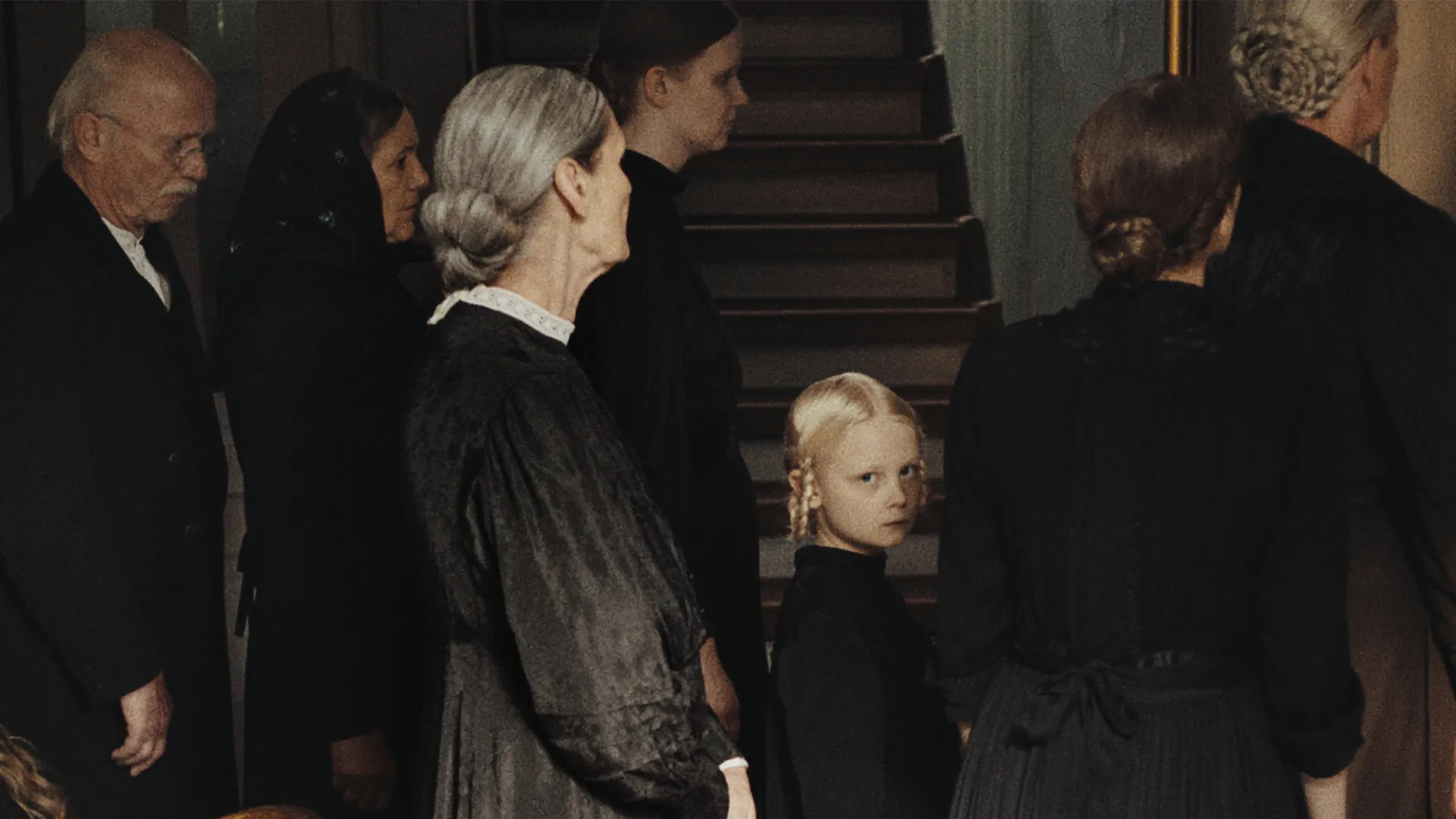Director: Mascha Shilinski
Writers: Louise Peter, Mascha Shilinski
Stars: Hanna Heckt, Lena Urzendowsky, Susanne Wuest
Synopsis: A remote German farm harbors generations of secrets. Four women, separated by decades but united by trauma, uncover the truth behind its weathered walls
Every story is a ghost story in one way or another, with stories being hauntings of the past and characters being the ghosts of real people. They let us feel the presence of what isn’t there, no matter if it was thirty years or two months ago. Things cannot be changed, so we tend to tell tales to uncover the uncovered, live what hasn’t been lived, or remember what has been lost. In the case of Mascha Schilinski’s sophomore feature, Sound of Falling (screened in competition at the 2025 Cannes Film Festival, where it tied for the Jury Prize), we venture through four generations of young women and their traumas living on the same German farm. In this highly experimental and melancholic exploration of guilt, shame, yearning, and repression, Schilinski offers us a poetic ghost story that unfolds through time and memory, evoking all its ominous sensations.
Guided by mood and emotion, the film is carefully pieced together. Schilinski invites the audience to fully immerse themselves in the sensory experience to marinate in its motifs. Through inspired filmmaking, Schilinski leaves her mark on the Cannes competition with adept tact, a distinctive visual language, and a resounding voice. In Sound of Falling, there are numerous characters, each represented in a separate chapter, following one of the central women in their respective eras. At the same time, they struggle on the family farm. They are all young, with Schilinski commenting that the patriarchal abuse begins right from the start, deconstructing the person without the chance of building their own identity. The film begins in the early 20th century, with Alma (Hanna Heckt) at its center.
Alma has seen many troubling things in her young life, all of which she describes with great detail during her narration, starting with her uncle losing a leg through amputation and her aunt’s intrigue with him and his injury. Her descriptions are delivered as if Heckt was reciting poetry, with each memory told in prose, but dark and brooding. Many existentialist and contemplative comments are shared by Alma, as well as the other narrators that you hear. These voices, and the images that accompany them, gave me goosebumps, making me quite anxious and dreading an escape. But there isn’t one; you must let it take over you until Schilinski decides to open the door. Alma worries about her mortality, questioning what happens when we die, and she’s answered: “Nothing.”
A sense of despondency consumed me from this response; cinematographer Fabian Gamper lingers in the shadows surrounding the farm. What Schilinski wants to do with these existentialist parables is not create a crisis in the same vein as Lars von Trier’s Melancholia; she wants to say that even with death, there is no finality. The pain and suffering continue to linger for generations, sometimes being transferred from one vessel to another–the burden of life is imprinted on the ones who haven’t even begun to live yet. There is a lucidity to these retellings; even at a young age, Alma understands the rigor of what she has seen or heard. That despondency and suffering plagues the farmhouse, and it goes through Alma and is passed down to her daughter, Angelika (Lena Urzendowsky), who experiences some horrid things.
Each generation inherits the pain of the last, their suffering accumulating like dust in the farmhouse walls. Their lives are intertwined through cruelty, with things never seeming to change as time passes. The setting changes due to modernization, but the delicate lining of the farmhouse remains static, its walls built on the sadness and fear these women face daily. This feeding shapes the ghost story–consuming the women’s once-lucky spirits and turning them into specters that haunt the farm day by day, year by year. Time is fractured, so is the structure of Sound of Falling, as it jumps between different periods to present a variety of perspectives and hear the accounts of a broken soul navigating the seas of melancholy, which makes the experience very disorienting. You feel astray, disconnected from your world, and voyaging through the sadness. You never know where you are or what time it is.
It is not the guided travels in the form of Gaspar Noé’s Enter the Void, where we follow the spirit of a recently deceased man as he searches for the afterlife, inspired by the scriptures in The Tibetan Book of the Dead. But we enter the women’s encapsulation of the void, which is equally (and even more so) hauntingly entrancing. At first, you don’t know what Schilinski wants to do with Sound of Falling. The first array of images evokes an eerie feeling from a scene of liveliness: the image of a young girl with a shadowy presence, as everything goes quiet, is preceded by that of her sisters laughing as their maid chases them after they prank her. The audience is presented with two tones in a matter of seconds, and one is curious about the cause of this shift.
Later on, you get a grasp on the reason “why” of this change during the introduction. Innocence is taken away for tragic clarity. Laughter drowns in the woes of others–a thing of nightmares becomes reality through subtle reverberations of surrealism. A sound, a voice in the background, or a photograph invokes dread in simple, imaginative ways. Schilinski never opts to over-style her film because it might rid her film of its grounded yet ghostly atmosphere. Her focus is more on building an ominous atmosphere and creating a sense of being in a constant loop, without sensationalizing the characters’ suffering to the point of exploitation. Schilinski trusts the viewer to sit with discomfort and recognize the echoes of trauma not just in dialogue or expression but in the air, silence, and repetition. The film does not offer answers or catharsis. We are left unsettled and wandering through this emotional fog during and after the movie, where Schilinski turns pain into poetry and memory into myth.







